EDITOR’S NOTE: Watch a replay of our live coverage of the launch here.
SFN Live
A SpaceX Falcon 9 rocket lifted off from Cape Canaveral early Sunday with a commercial Japanese robotic moon lander and a NASA hitchhiker micro-payload called Lunar Flashlight that will seek out signs of water ice hidden in the permanently dark floors of craters at the moon’s poles.
The 229-foot-tall (70-meter) Falcon 9 launcher departed from pad 40 at Cape Canaveral Space Force Station at 2:38:13 a.m. EST (0738:13 GMT) Sunday, a week-and-a-half after SpaceX grounded the mission to resolve an unspecified problem with the rocket. SpaceX rolled the rocket back into its hangar for troubleshooting after calling off a Nov. 30 launch attempt, then returned the Falcon 9 to the pad for Sunday’s countdown.
The commercial Hakuto-R moon lander, developed by a Japanese company called ispace, will attempt to become the first privately-developed spacecraft to accomplish a soft landing on the lunar surface. Lunar Flashlight will fly to the moon on its own trajectory, eventually settling into an orbit that will repeatedly take the spacecraft as close as 9 miles (15 kilometers) from the moon’s south pole on the hunt for signs of water ice.
The launch Sunday occurred about 10 hours before the scheduled splashdown of NASA’s Orion crew capsule to wrap of a 25-day unpiloted test flight to the moon and back, and occurred on the 50th anniversary of the Apollo 17 landing on the last visit of astronauts to the moon.
Nine kerosene-fueled Merlin 1D engines delivering 1.7 million pounds of roaring thrust powered the Falcon 9 rocket high into the sky over Cape Canaveral. The launcher headed east over the Atlantic Ocean, surpassed the speed of sound in less than a minute, then shut down its first stage engines about 2 minutes and 13 seconds into the flight. A few moments later, the booster stage broke free of the Falcon 9’s upper stage, which ignited a single engine to continue the climb into orbit.
The reusable booster, designated B1073 and making its fifth flight to space, reversed course with a retro-rocket engine firing and flew back to Cape Canaveral for a successful touchdown at Landing Zone 2, one of SpaceX’s two seaside rocket recovery pads about 6 miles (10 kilometers) south of the Falcon 9’s launching stand. The landing was the second time SpaceX has recovered a rocket onshore at Cape Canaveral in less than three days, following the launch and landing of a Falcon 9 booster Thursday on a mission carrying internet satellites into orbit for OneWeb.
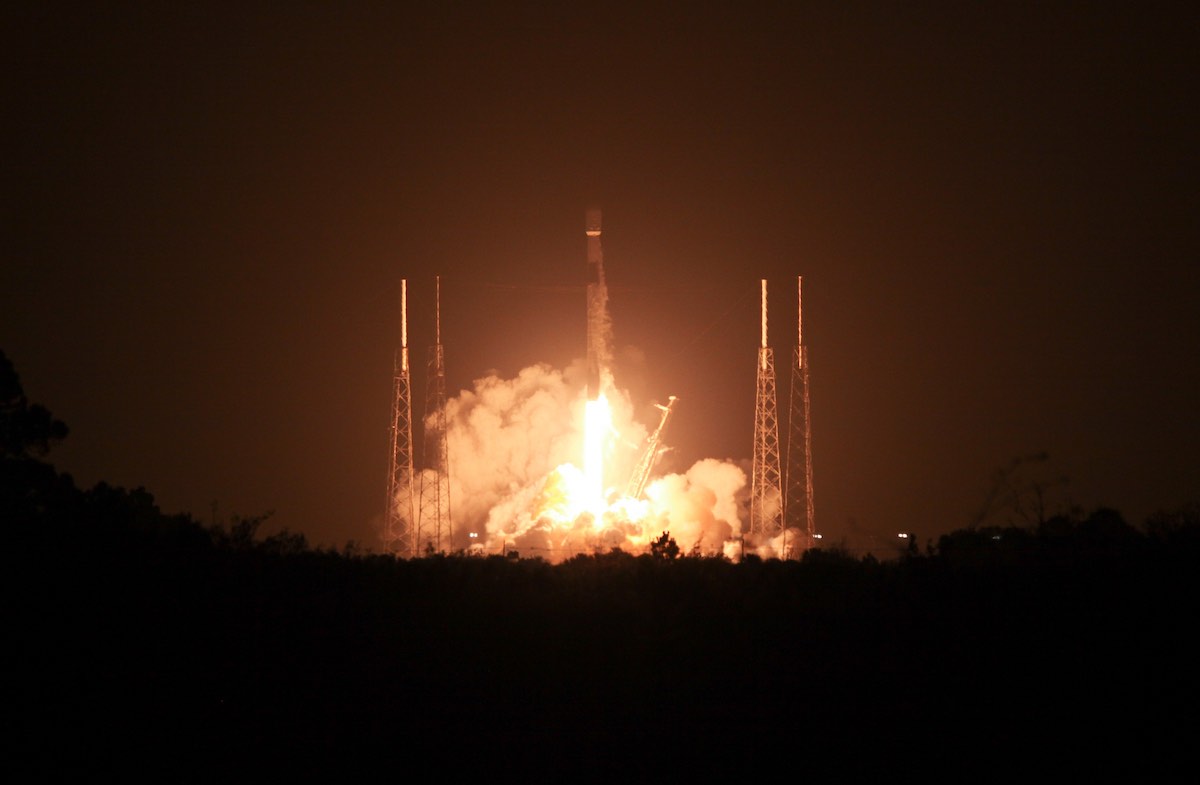
The Falcon 9’s upper stage placed the Hakuto-R and Lunar Flashlight payloads into a low-altitude parking orbit less than eight minutes after liftoff. At T+plus 40 minutes, with the rocket soaring over Africa, the upper stage reignited for a nearly minute-long firing to propel the payloads on a trajectory to escape the grip of Earth’s gravity and head into deep space.
The Hakuto-R spacecraft, about the size of a compact car, deployed first from the rocket about 47 minutes into the mission. Live video from a camera on-board the rocket showed the moon lander separating from the Falcon 9. Six minutes later, SpaceX confirmed NASA’s Lunar Flashlight spacecraft had spring-ejected from a deployment mechanism on the upper stage.
NASA’s Jet Propulsion Laboratory, which led development of the Lunar Flashlight mission, quickly confirmed ground teams received the first signals from the moon-bound spacecraft. Video from the Falcon 9’s on-board camera appeared to show ispace’s Hakuto-R spacecraft extended its four landing legs a few minutes after separation from the rocket, but ispace did not immediately verify whether mission controllers at the company’s Tokyo headquarters had established contact with the lander.
Assuming all is well with Hakuto-R, the lander will fire its main engine for its first post-launch maneuver about a day into the mission. Additional engine burns are scheduled throughout Hakuto-R’s four-and-a-half month journey from liftoff until it lands on the moon.
The Hakuto-R and Lunar Flashlight spacecraft launched on a course that will take them a million miles from Earth, well beyond the moon, on a long-duration but fuel-efficient low-energy transfer trajectory.
Once in orbit around the moon, ispace’s Hakuto-R lander will fire its main engine to autonomously descend to the lunar surface, targeting a landing in the northern hemisphere of the moon’s nearside.
Here’s a view of the sky show over Cape Canaveral as SpaceX’s Falcon 9 booster reignited its engines to propel itself back to the spaceport for landing. https://t.co/TEbYNu9z2Z pic.twitter.com/Iczve14JQU
— Spaceflight Now (@SpaceflightNow) December 11, 2022
The moon lander mission is the culmination of 12 years of engineering development and fundraising, an effort that included starts, stops, and wholesale changes in scope.
The Google Lunar X Prize, the sweepstakes that offered a $20 million grand prize to the first privately-funded team to put a lander on the moon, was the original impetus for Takeshi Hakamada to establish the company that eventually became ispace. Hakamada’s group, called Hakuto, worked on designing a lunar rover to ride to the moon on another lander. But the Google Lunar X Prize shut down in 2018 without a winner, leading some of the teams to dissolve or struggle to find new purpose.
Hakamada redirected ispace’s efforts to design and develop its own moon lander, a reboot the firm calls Hakuto-R. Hakuto means “white rabbit” in Japanese.
“Since then, our mission shifted from only the Lunar X Prize to a broader transportation business,” Hakamada said in an interview with Spaceflight Now. “We are aiming to launch our first mission Nov. 30. This is going to be the first private mission to land on the moon, and we are going to bring payloads from the government side and also the private sector, too. This is going to be opening the door for future commercial cislunar industries.”
As of July, the company had secured $237 million in equity financing and bank loans to pay for the Hakuto-R lunar transportation program, although ispace has not disclosed the standalone cost of the first mission. The company says it “specializes in designing and building lunar landers and rovers.”
The goal of ispace is to “extend the sphere of human life into space and create a sustainable world by providing high-frequency, low-cost transportation services to the moon,” according to the company’s website.
Falcon 9’s first stage booster has arrived on Landing Zone 2 at Cape Canaveral Space Force Station, eight minutes after blastoff with a Japanese moon lander mission.
This completes the fifth flight to space for Booster No. 1073.https://t.co/TEbYNu9z2Z pic.twitter.com/m6pmKHjfhy
— Spaceflight Now (@SpaceflightNow) December 11, 2022
The first Hakuto-R lander, which ispace calls Mission 1, will carry about 24 pounds (11 kilograms) of customer payloads to the moon’s surface, according to Hakamada. By far, the largest of the payloads is a rover from the United Arab Emirates developed by the Mohammed Bin Rashid Space Center. While the rover takes up most of the Hakuto-R lander’s payload capacity, it is still small in stature, measuring just 21 inches by 21 inches (53-by-53 centimeters).
The lander is also hauling an even smaller mobile robot developed by the Japan Aerospace Exploration Agency and the Japanese toy company Tomy. The so-called transformable lunar robot weighs just a half-pound (250 grams) and is some 3 inches (80 millimeters) wide before it deploys tiny wheels to roll across the lunar surface and collect data and imagery to aid in the design of a future pressurized rover to transport astronauts on the moon.
A payload from NGK Spark Plug, another Japanese company, will test the performance of solid-state batteries. The Hakuto-R landing craft also has payloads from three Canadian companies: Wide-angle cameras from Canadensys, an artificial intelligence flight computer from Mission Control Space Services, and a demonstration for NGC Aerospace’s crater-based autonomous navigation system.
First, ispace’s lander has to reach the moon. Government-led missions from the United States, the Soviet Union, and China have landed on the moon, but ispace is using a commercial business model.
“Our mission is privately funded,” Hakamada said. “However, we have some relationships with governments, like our payload from the UAE Space Agency and MBRSC, and we also have a JAXA payload as well. But even these payloads are commercial contracts, with no R&D funding from the government, so totally different than the past engagement with the government.”
Separation of ispace’s Hakuto-R moon lander from SpaceX’s Falcon 9. The Hakuto-R lander deployed after the rocket’s upper stage completed a minute-long firing to send it toward the moon.
Hakuto-R will soon extend its landing legs & contact ground teams.https://t.co/TEbYNu9z2Z pic.twitter.com/mdDRTHiDe8
— Spaceflight Now (@SpaceflightNow) December 11, 2022
Hakamada’s investors include Suzuki, Japan Airlines, the Development Bank of Japan, Konica Minolta, Dentsu, and numerous venture capital and equity funds.
The fundraising allowed ispace to purchase parts for its Hakuto-R lander from suppliers around the world. The hydrazine-fueled propulsion system comes from ArianeGroup, which also helped ispace perform final assembly of the lander in Germany. Draper, a Massachusetts-based company, is providing guidance, navigation, and control software for the landing, a similar role Draper filled on NASA’s Apollo missions. The solar panels were supplied by Sierra Space.
“As our first mission, my strategy was to accelerate the speed to go to the market,” Hakamada said. “In order to do that, we recognized that becoming the systems integrator is key to accelerate the speed of development. If we develop each of the components, it takes time. There is technology for this, and the important point is how do you integrate the technology into one system with enough funding.”
The first Hakuto-R lander, known as the Series 1 design, weighs about 2,200 pounds (1 metric ton) fully fueled for launch. About two-thirds of its launch mass is hydrazine and nitrogen tetroxide propellants to feed the lander’s engines. With its legs extended, the lander stands 7.5 feet (2.3 meters) tall and 8.5 feet (2.6 meters) wide.
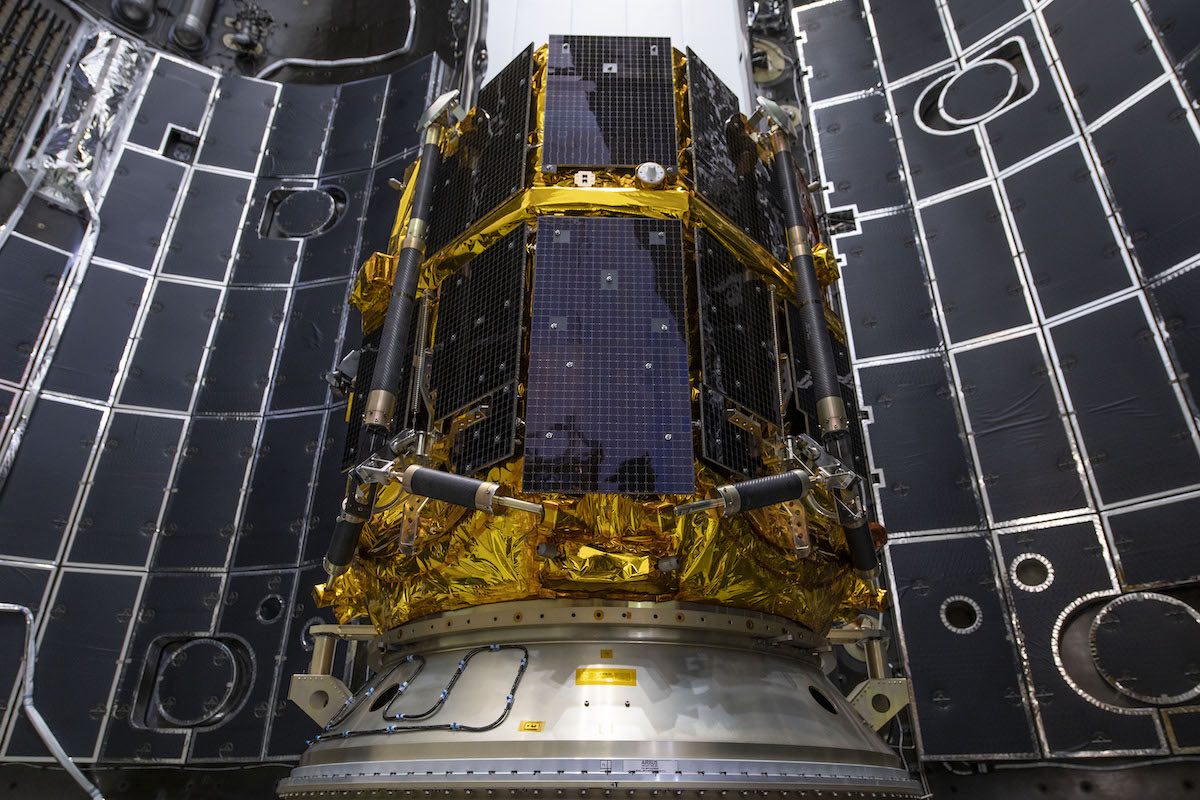
Hakuto-R will reach a maximum distance a million miles, or 1.5 million kilometers, away from Earth before gravity pulls it back toward the moon. The Hakuto-R lander will fire thrusters to be captured into lunar orbit, then set up for the final descent to the surface around the end of April.
“We call it a low-energy orbit because we can reduce propellant consumption using this orbit, having an assist from the gravity of the sun,” Hakamada said. “In order to reduce the launch mass and reduce launch cost, we selected this orbit. But this orbit is similar to several recent mission to use similar trajectory, like the CAPSTONE mission by NASA or the Korean lunar orbiter as well. So we don’t think there is a lot of risk on this orbit.”
The target landing site is Atlas crater, located in a region on the nearside of the moon called Mare Frigoris, or the Sea of Cold. Engineers at a mission operations center in Tokyo will oversee Hakuto-R’s flight to the moon.
Ryo Ujiie, ispace’s chief technology officer, said the company has identified 10 major milestones for its first lunar landing mission. The first milestone has already been achieved with the completion of launch preparations. That will be followed by the launch and deployment of the Hakuto-R spacecraft, establishment of steady-state operations, and the first orbit control maneuver within one or two days of liftoff.
Other milestones included the completion of one month of operations in deep space, the execution of additional course correction burns, entry into lunar orbit, adjustments to line up with the landing site, and the landing itself. A final objective will be the completion of payload operations on the lunar surface.
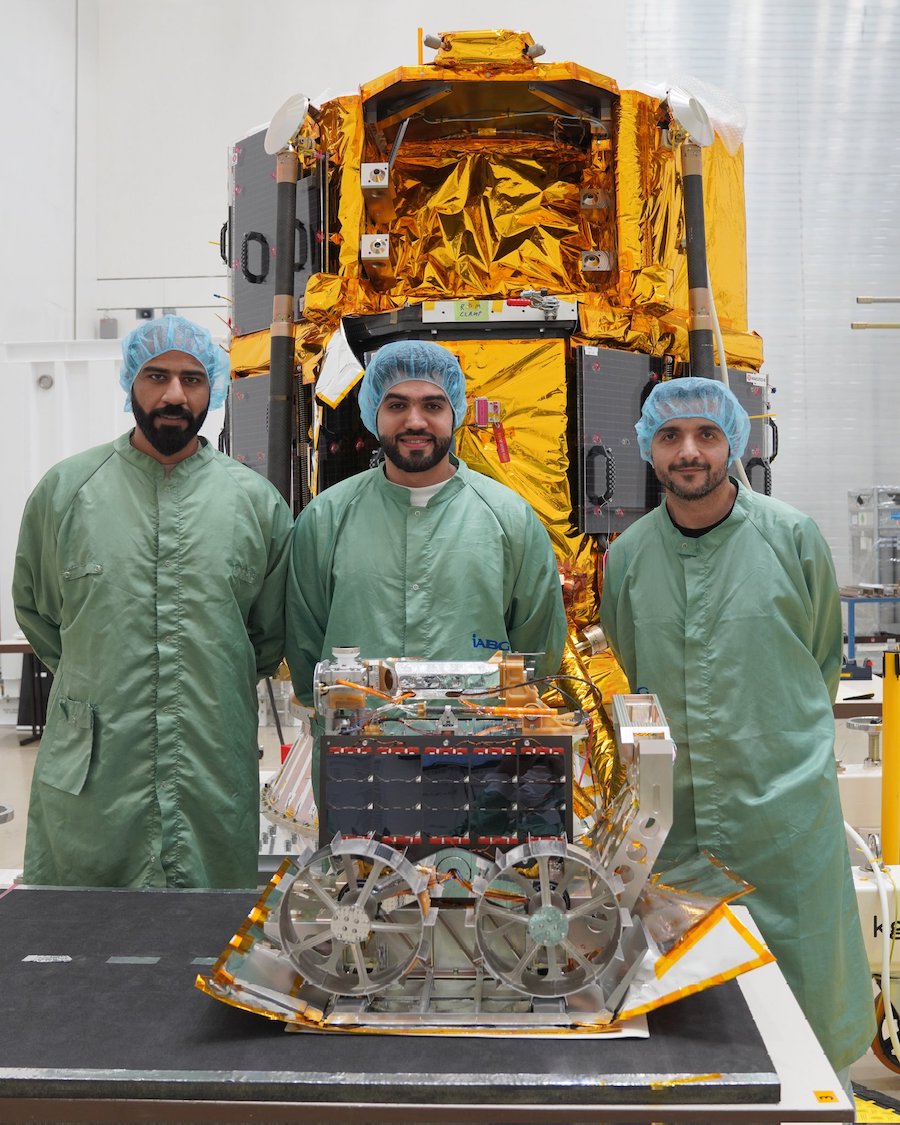
Assuming the landing is successful, the spacecraft is designed to operate for about 10 days after touchdown. long enough to deploy the UAE’s moon rover and JAXA’s mobile robot. The stationary landing craft will relay communications signals from the deployable payloads back to Earth. The mission will end when sun sets on the landing site to begin the two-week-long lunar night.
Aside from the payloads mounted on lander, ispace aims to fulfill a contract with NASA with the first Hakuto-R mission. NASA awarded contracts in 2020 to purchase lunar regolith from commercial companies, including a $5,000 deal to ispace. All of the agreements were relatively low in monetary value.
The initiative is part of NASA’s Artemis moon program. NASA wants to eventually contract with commercial companies to acquire resources, such as minerals and water, that could sustain a future moon base. The transfer of ownership of lunar soil from a private company to NASA will help officials on both sides of the transaction sort through legal and regulatory issues.
“It’s only the conceptual transfer of ownership,” Hakamada said. Bits of dust kicked up by the landing engine are expected to settle on the footpads of the lander’s legs.
“The regolith will come in and cover the pad, and we declare the capture of the lunar regolith, and then transfer the ownership of the regolith on this pad. We don’t move this regolith somewhere else, we don’t expect that for this first mission.”
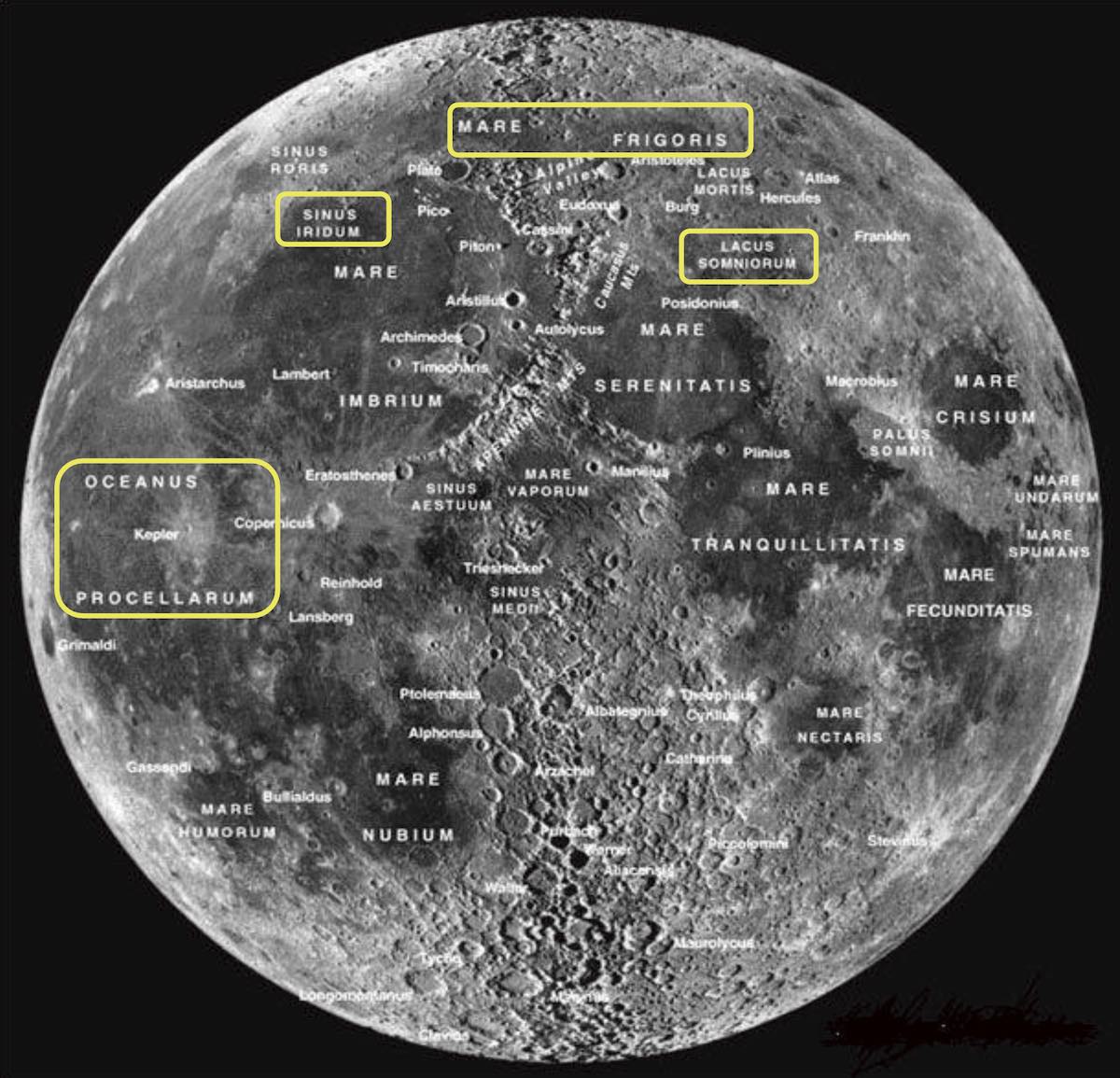
Hakamada said ispace has a second contract to sell lunar regolith to NASA on the company’s next lunar landing mission, scheduled for 2024. On that mission, ispace may attempt to scoop up some soil from the lunar surface.
While the first Hakuto-R Series 1 lander is a purely commercial mission, ispace is working with Draper and other space companies to develop a larger robotic moon lander to transport up to a half-ton of cargo to the moon for NASA. Draper and ispace won a NASA Commercial Lunar Payload Services, or CLPS, contract earlier this year to deliver multiple NASA science instruments to the moon’s surface in 2025.
NASA’s first two CLPS missions will be flown by Astrobotic and Intuitive Machines. Both of those companies plan to launch their first privately-developed moon landers next year.
NASA’S LUNAR FLASHLIGHT ON THE WAY TO THE MOON AFTER MISSING RIDE ON ARTEMIS 1
NASA’s Lunar Flashlight mission secured a ride to space as a rideshare payload with the Hakuto-R lander after it missed a deadline for integration last year on NASA’s Space Launch System moon rocket, which blasted off Nov. 16 on the Artemis 1 lunar test flight with the Orion spacecraft and 10 small CubeSat secondary payloads.
The 31-pound (14-kilogram) CubeSat will use its own compact propulsion system to maneuver into an oval-shaped near rectilinear halo orbit that skims just 9 miles (15 kilometers) from the moon’s south pole at its closest approach, and arcs as far as 43,000 miles (70,000 kilometers) from the moon at its farthest point.
It will take about four months for Lunar Flashlight to reach its science orbit after flying a similar, but independent low-energy transfer trajectory as the Hakuto-R lander.
The Lunar Flashlight mission, led by NASA’s Jet Propulsion Laboratory, is designed to orbit the moon and shine infrared lasers into permanently shadowed craters near the lunar poles. An instrument on Lunar Flashlight will measure the light reflected off the lunar surface, revealing the composition and quantity of water ice and other molecules hidden on dark crater floors.
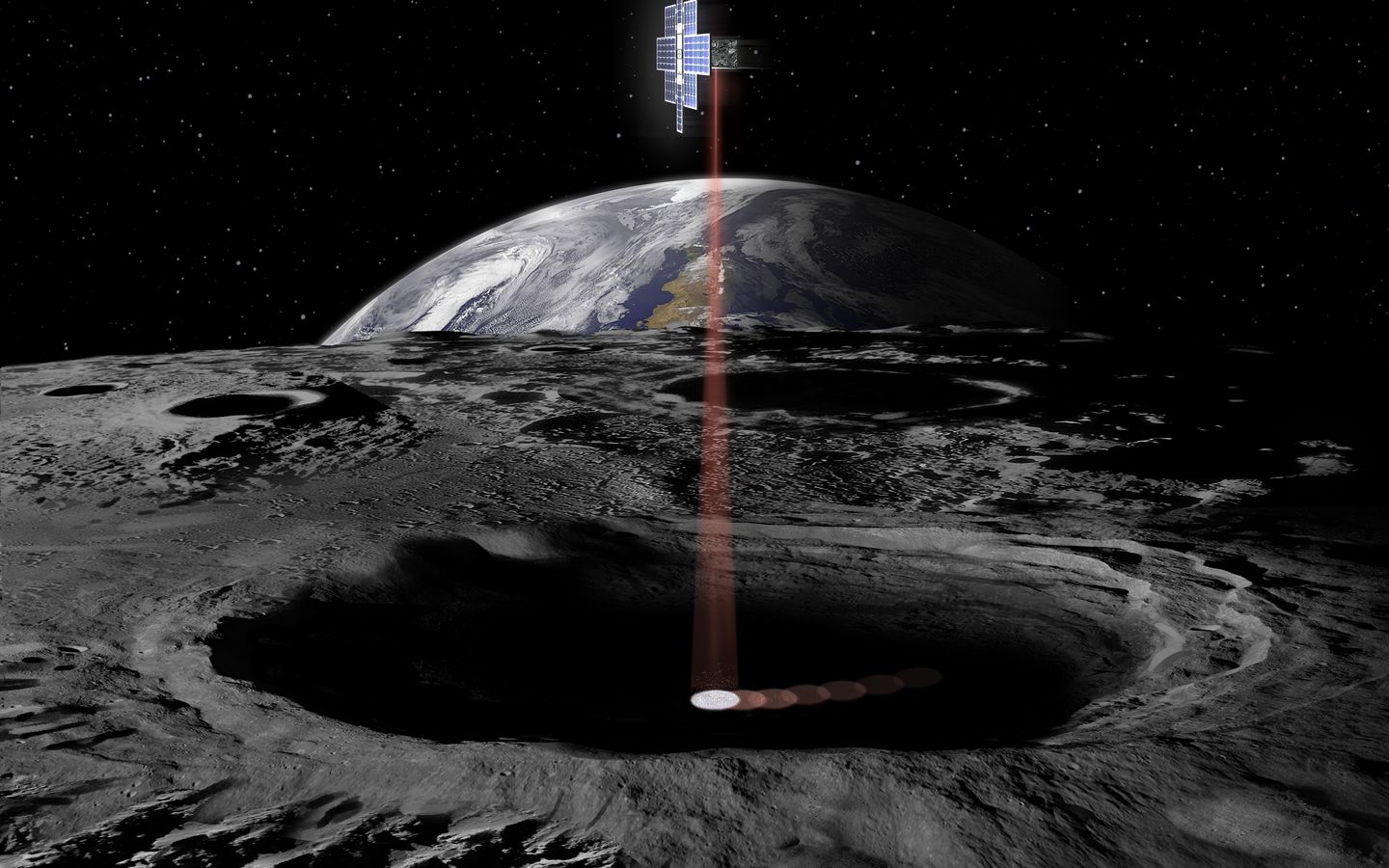
“It is ambitious for a tiny spacecraft,” said Barbara Cohen, Lunar Flashlight’s principal investigator from NASA’s Goddard Space Flight Center. “What we are doing is we are using four infrared lasers in different infrared wavelengths to search for definitive markers of water ice. We use the laser to shine onto the surface of the moon. At certain wavelengths, ice will absorb those wavelengths but rock or regolith will reflect them.”
Scientists will be able to determine the presence of water ice, and hints about how much there is, based on how much of the laser light bounces off the permanently dark floors of the polar craters. Other missions use reflected sunlight to search for signs of water.
“If you don’t have the sun shining in permanently shadowed craters, you have to bring your own illumination, and that’s what Lunar Flashlight is doing,” Cohen said.
Other missions have found evidence of subsurface ice, and hints of water ice deposits at the surface on the crater floors. Lunar Flashlight will try to confirm the presence of ice at the surface. Surface ice deposits could be accessed by future astronauts to help create drinking water and rocket propellant.
NASA selected 13 CubeSat missions, including Lunar Flashlight, to ride on the first SLS flight, known as Artemis 1.
Lunar Flashlight was one of the three CubeSat missions that weren’t ready in time to be integrated onto the SLS moon rocket before it was closed out for the Artemis 1 test launch.
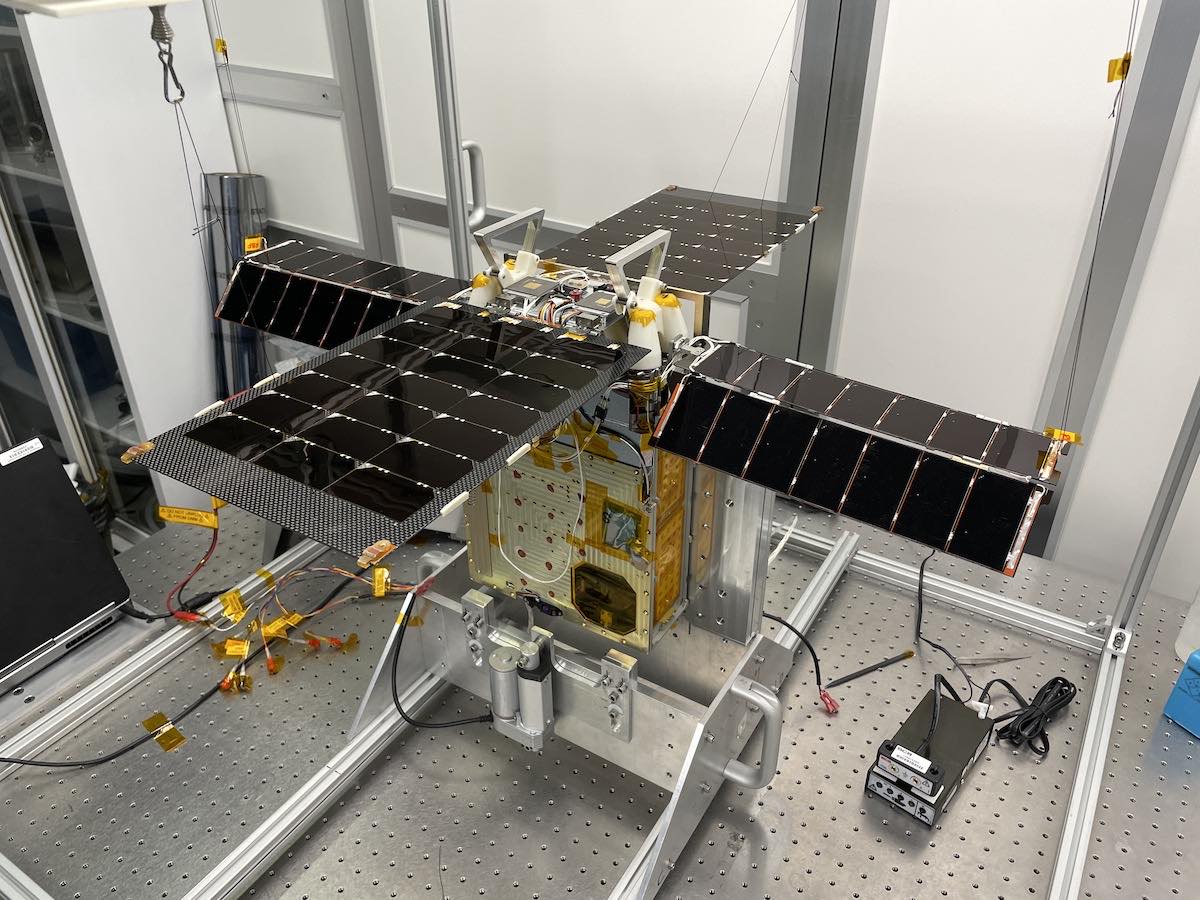
A NASA spokesperson said last year that issues with the original propulsion system for the Lunar Flashlight spacecraft, a solar sail, forced managers to switch to an alternative design using non-toxic “green” propellant. That slowed development of the mission, and coupled with effects from the COVID-19 pandemic, prevented the spacecraft from being ready for integration with the Artemis 1 rocket.
After missing its ride on Artemis 1, Lunar Flashlight was assigned to launch on a SpaceX rocket with a commercial moon lander owned by Houston-based Intuitive Machines. That launch has been delayed to 2023 due to delays in developing Intuitive Machines’ lander, so NASA was able to switch Lunar Flashlight to the Hakuto-R mission.
Cohen said Lunar Flashlight ended up in a better situation than if it had launched on Artemis 1. Some of the CubeSat rideshare payloads on the Artemis 1 moon rocket could not recharge their batteries from the time they were integrated on the launcher in 2021 until the launch a year later.
“We are in a little bit better situation because we are fully charged, and we didn’t have to sit on the pad for a year,” Cohen said.
ROCKET: Falcon 9 (B1073.5)
PAYLOAD: ispace’s Hakuto-R Mission 1
LAUNCH SITE: SLC-40, Cape Canaveral Space Force Station, Florida
LAUNCH DATE: Dec. 11, 2022
LAUNCH TIME: 2:38 a.m. EST (0738 GMT)
WEATHER FORECAST: TBD
BOOSTER RECOVERY: Landing Zone 1, Cape Canaveral Space Force Station, Florida
LAUNCH AZIMUTH: East
TARGET ORBIT: Low-energy lunar transfer orbit
LAUNCH TIMELINE:
- T+00:00: Liftoff
- T+01:12: Maximum aerodynamic pressure (Max-Q)
- T+02:13: First stage main engine cutoff (MECO)
- T+02:17: Stage separation
- T+02:24: Second stage engine ignition
- T+02:29: First stage boost back burn ignition (three engines)
- T+03:06: Payload fairing jettison
- T+03:26: First stage boost back burn cutoff
- T+06:33: First stage entry burn ignition (three engines)
- T+06:53: First stage entry burn cutoff
- T+07:44: First stage landing burn ignition (one engine)
- T+07:52: Second stage engine cutoff (SECO 1)
- T+08:16: First stage landing
- T+40:02: Second stage engine restart
- T+40:58: Second stage engine cutoff (SECO 2)
- T+46:59: Hakuto-R spacecraft separation
- T+53:09: Lunar Flashlight spacecraft separation
MISSION STATS:
- 189th launch of a Falcon 9 rocket since 2010
- 198th launch of Falcon rocket family since 2006
- 5th launch of Falcon 9 booster B1073
- 162nd Falcon 9 launch from Florida’s Space Coast
- 105th Falcon 9 launch from pad 40
- 160th launch overall from pad 40
- 129th flight of a reused Falcon 9 booster
- 1st SpaceX launch for ispace
- 3rd SpaceX launch of a moon mission
- 55th Falcon 9 launch of 2022
- 56th launch by SpaceX in 2022
- 54th orbital launch attempt based out of Cape Canaveral in 2022
Email the author.
Follow Stephen Clark on Twitter: @StephenClark1.
